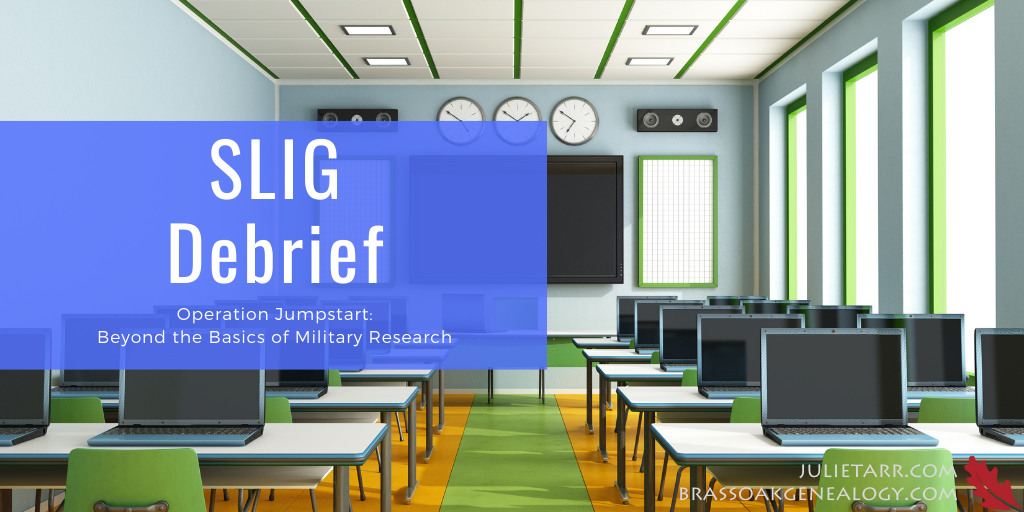
It’s been a busy week of learning! Just wrapped up five days of genealogy education at the Salt Lake Institute of Genealogy (SLIG). To continue my educational journey into the world of military research, I took Michael Strauss’s Operation Jumpstart: Beyond the Basics of Military Research. In 2021, I took Michael’s Military Records I: The Colonial Era To the Vietnam War course at the Institute of Genealogy and Historical Research (IGHR), which was excellent, so I followed it up with this SLIG course. (You can read my debrief of the other course here.)
This time around, my main objectives were:
- Learn more about the history of the various military branches.
- Learn how the branches of military are organized and the evolution over time.
- Gain a better understanding of how to find and use various military records relevant to my research.
I, of course, fulfilled these main objectives, and then some!
After the IGHR course, I formed two research questions that I wanted to focus on. They were:
- What did Robert Parks (b. 1776), who served in John Harris’s New York Militia, experience during his War of 1812 service?
- Did Aaron Webster, born in 1775 and residing in Adams, Jefferson County, New York, in 1810, serve in the War of 1812 as purported in various sources?
With the additional knowledge I gained in this course, I think I’m in a better position to build solid research plans around these questions.
I’ve also established two new questions:
- What did John F. Cahill, who served in the 167th Combat Engineers, experience during his World War II service?
- What did John Ward McMahon (service no. 6039353) experience as a “trainee” in the US Coast Guard Auxiliary in 1945? (And, what is the US Coast Guard Auxiliary?)
As expected, the SLIG course was wonderful! Michael is a great instructor and a fountain of military knowledge. And, of course, the other instructors (Rebecca Koford, Lori Berdak Miller, Rick Sayre, Jerry Smith, and Judy Russell) were fabulous as well.
Besides fulfilling my learning objectives, some of the more interesting parts of this course were:
- Learning about the draft, including its origin and evolution over time, the laws, and the process.
- Learning how to decode military service/serial numbers.
- Learning more about federal and state bounty land.
- Learning about the laws and records of war (I had no idea about most of what Judy shared with us!).
Operation Jumpstart was a great next step from the Military Records I IGHR course. This time, we dug really deep into the records that were introduced in Military Records I. And, we covered a variety of other things that will be incredibly helpful for conducting military research. I can’t wait to take Michael’s Military Records III at IGHR.
Even though going virtual was a very last minute thing, the SLIG team did a fantastic job pivoting.
A big shout-out to all of the course coordinators and instructors, the SLIG team, and the Hive Minders for all their hard work to make SLIG 2022 and enjoyable experience!

Thanks for sharing. You have such an interesting way of sharing your experiences!